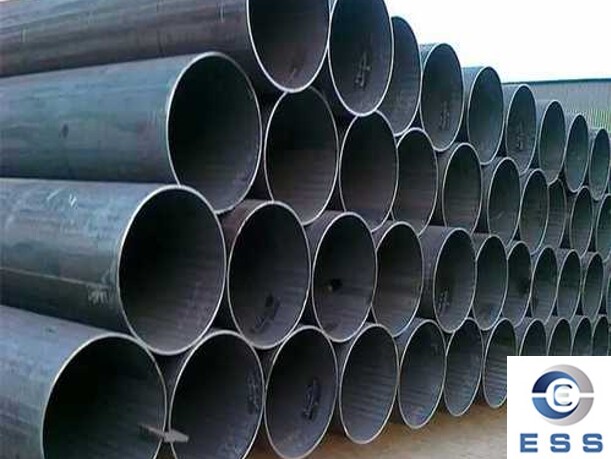
Among the many pipes in the industrial
field, seamless mild
steel tube and welded mild steel tube occupy an important position.
Although they both belong to the category of mild steel tubes, they have
significant differences in manufacturing processes, structural characteristics,
performance and application scenarios. difference.
Manufacturing process
1. Seamless mild steel tube
It is manufactured through processes such
as perforation, hot rolling or cold drawing. In the hot-rolled seamless
pipe process, the solid tube blank is first heated, then pierced by a
piercing machine, and then rolled into the required size by a pipe rolling
machine. Cold-drawn seamless pipes are drawn into finer pipes through a drawing
die at room temperature. For example, for some seamless mild steel tubes with
high precision requirements, the cold drawing process can better control the
dimensional accuracy of the pipe, making the tolerance range of its outer
diameter and inner diameter smaller.
2. Welding mild steel tube
It is formed by curling steel strips or
steel plates and then welding the seams using a welding process. Common welding
methods include ERW and SAW. High-frequency resistance welding uses resistance
heat generated by high-frequency current at the welding edge of the pipe for
welding. It is fast and efficient. Submerged arc welding welds by burning the
arc under the granular flux layer. The weld quality is good and suitable for
Thick wall pipe.
Structural features
1. Seamless mild steel tube
Its biggest feature is that there are no
welds and the overall structure is uniform and continuous. This structure makes
the stress distribution of the seamless pipe more uniform when it is under
pressure, and there is no problem of stress concentration at the weld.
Therefore, seamless mild steel tubes have more advantages in high-pressure
environments and can withstand higher internal and external pressures. For
example, in high-pressure hydraulic systems or boiler piping, seamless mild
steel pipes are more reliable.
2. Welding mild steel tube
Since it is connected by welding, the
structure of the weld may be different from that of the base material. Although
welding processes are constantly improving, the weld is still a relatively weak
link. When subjected to large pressure or impact, problems such as cracking may
occur at the weld. However, the size and shape of welded mild steel tubes can
be more flexible. With appropriate welding processes and quality control, pipes
of various specifications and complex shapes can be produced.
Performance
1. Strength and pressure resistance
Seamless mild steel tubes generally have
higher strength and pressure resistance under the same conditions. This is
because its uniform structure is better able to resist internal pressure and
external loads.
The strength and pressure resistance of
welded mild steel tubes mainly depend on factors such as weld quality and pipe
wall thickness. If the weld quality is good and the wall thickness is
sufficient, it can also meet certain pressure requirements, but under extreme
conditions of high pressure, it may not be as reliable as seamless pipes.
2. Corrosion resistance
There are no welds inside seamless mild
steel tubes, which reduces potential corrosion risks caused by differences in
metal structures at the welds. But this does not mean that seamless pipes are
necessarily more corrosion-resistant than welded
pipes. Their corrosion resistance is also related to factors such as the
surface treatment of the pipe and the corrosive environment in which it is
located. For example, in some environments containing corrosive media, whether
it is seamless or welded mild steel tube, anti-corrosion coating treatment may
be required to improve corrosion resistance.
3. Accuracy and surface quality
Seamless mild steel tubes can achieve
higher dimensional accuracy and better surface quality through precision
processing techniques, such as cold drawing. Its inner and outer surfaces are
smooth, and it is suitable for occasions with high requirements on pipe
accuracy and surface, such as shaft sleeves in machining or some precision
hydraulic system pipes.
Welded mild steel plates may require
additional processing to improve the surface quality after welding, and its
dimensional accuracy is relatively difficult to control to the level of
seamless pipes.
Application scenarios
1. Seamless mild steel tube
It is widely used in fields with high
requirements on pipe quality and performance. For example, oil well pipes and
high-pressure transmission pipelines in the oil and natural gas industry;
high-pressure reactor connection pipes and high-precision chemical fluid
transportation pipelines in the chemical industry; used in the field of
machinery manufacturing to manufacture high-precision mechanical structural
components, such as transmission shafts, etc.
2. Welding mild steel tube
It is often used in situations where the
pressure requirements are not particularly high, but the cost is more sensitive
or there are special requirements on the shape and size of the pipe. For
example, ordinary water supply and drainage pipes in the construction industry,
and some simple structural support pipes; in agricultural irrigation systems,
welded mild steel tubes can be flexibly made into pipes of various shapes and
lengths according to actual needs to meet irrigation requirements.
Summarize
In summary, seamless mild steel tubes and
welded mild steel tubes have their own characteristics and play an
irreplaceable role in different industrial fields and engineering scenarios.
Understanding the difference between the two can help make scientific and
reasonable choices based on specific needs in actual engineering applications,
thereby ensuring the best balance of quality, efficiency and safety of the
project.













 Eastern Steel Manufacturing Co.,Ltd not only improve product production and sales services, but also provide additional value-added services. As long as you need, we can complete your specific needs together.
Eastern Steel Manufacturing Co.,Ltd not only improve product production and sales services, but also provide additional value-added services. As long as you need, we can complete your specific needs together.










